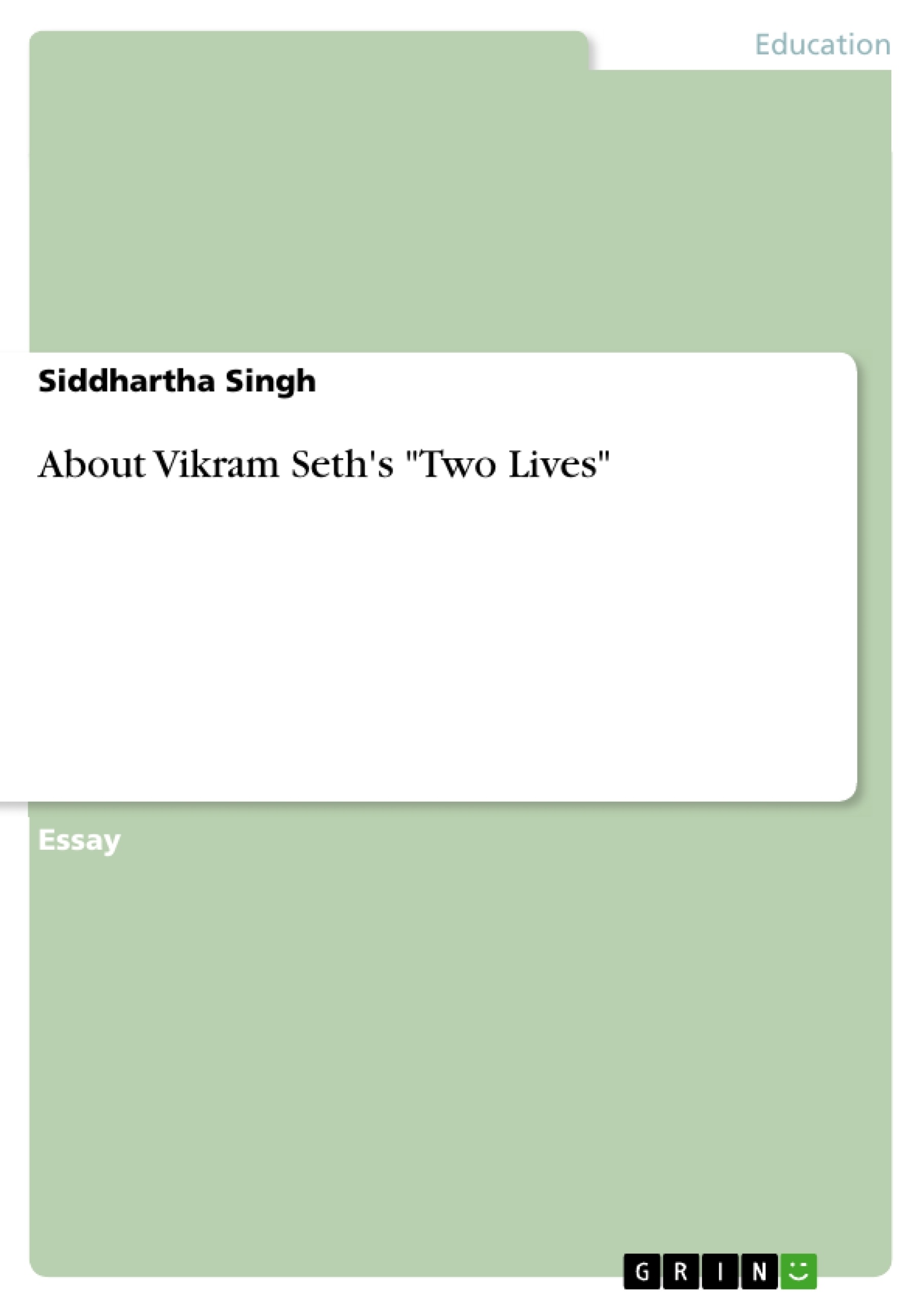migration, and double migration, a diasporic writer is
challenged and ruptured by the multiplicity of ambivalent
affiliations of language, class, race, gender and sexuality. The
writer often tends to deal with these affiliations as a mode of
postcolonial grand narrative¹ exposing the theoretical clichés
of marginalization and resistance. But a writer of a much
greater sensibility transcends these issues and moves
towards a global narrative of reconciliation and resolution. A
master of every genre ─ whether it is poetry, novels, libretto,
travelogue or children book ─ Vikram Seth’s Two Lives²
exhibits refreshing change in the postcolonial narrative
technique. A masterful fusion of biography, memory,
autobiography, documentary, history, fiction and essay like
excursions, it resists theory biased theme of cultural
resistance and gravitates towards a narrative of global
resolution. Deeply entrenched in the history of Second World
War it is a powerful reminder of the horrors and trauma of
the War. Two Lives does not do quite what is expected of a
postcolonial narrative or of an English novel in the tradition
of Jane Austen (as Seth’s magnum opus A Suitable Boy³ is
considered).A cosmopolitan4 story, narrated by a truly
cosmopolitan writer, It resists any branding of an Indian
writing in English.
Table of Contents
- I
- II
Objectives and Key Themes
Vikram Seth's Two Lives delves into the intertwined lives of Shanti and Henny, exploring their experiences during a tumultuous period marked by war, exile, and displacement. The author aims to shed light on the impact of history on individuals, particularly the enduring consequences of World War II. He also seeks to highlight the power of love and resilience in the face of adversity.
- The impact of World War II on individuals and societies
- The complexities of identity and belonging in a globalized world
- The power of love and resilience in the face of adversity
- The significance of history and its lessons for the future
- The role of literature in preserving memory and understanding the past
Chapter Summaries
I
This chapter introduces the protagonists, Shanti Behari Seth and Henny Gerdo Caro, and traces their lives through the 1930s and 1940s. Shanti, a dentist, emigrates to Berlin, where he meets Henny. Their love is complicated by Henny's relationship with Hans. The rise of Nazi Germany forces both of them to flee to England. Shanti serves in the British army and suffers a debilitating injury, while Henny manages to escape just before the outbreak of war. Despite their circumstances, they remain connected through letters and eventually marry after years of friendship. Seth, as a teenager, comes to live with them and begins to document their stories, particularly Henny's through her letters.
II
This chapter delves deeper into the impact of history on Shanti and Henny. Through Henny's letters, we witness the horror and trauma of the war and its aftermath. Her letters reveal the plight of Jews in postwar Germany, their suffering, and the resilience of some friends who offered support. Seth analyzes the rise and fall of Germany, its impact on nuclear research, and the enduring consequences of war. He emphasizes the importance of learning from history and avoiding repeating the mistakes of the past. He also explores the interconnectedness of individual lives and global events, arguing that even seemingly trivial choices can have profound consequences.
Keywords
The key themes explored in this work include World War II, exile, displacement, love, resilience, memory, identity, history, and the impact of global events on individual lives. The work also highlights the importance of individual choice and responsibility in shaping the world.
- Quote paper
- Siddhartha Singh (Author), 2013, About Vikram Seth's "Two Lives", Munich, GRIN Verlag, https://www.grin.com/document/208681



